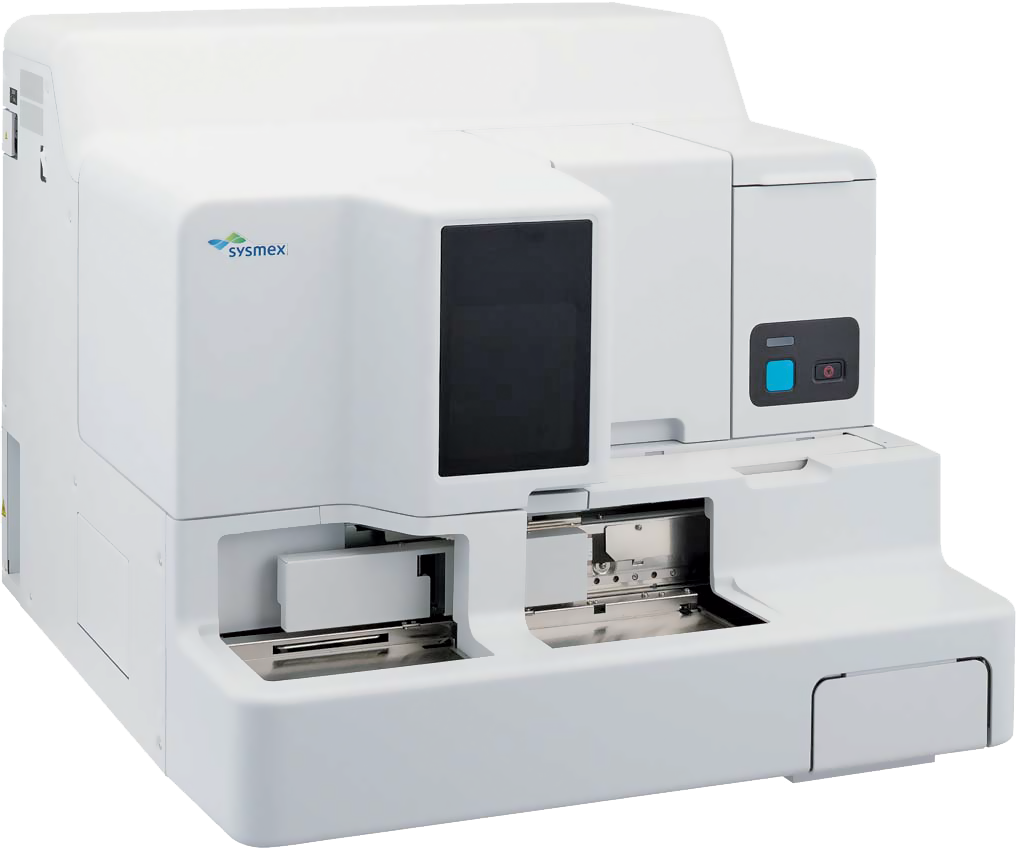Product Watch
CS series-Sysmex
The most frequently encountered pre-analytical interference in coagulation testing is hemolysis. The other two sources of endogenous interferences, lipid and bilirubin, are infrequently encountered.
Hemolysis, hyperlipidemia, and hyperbilirubinemia will cause an increase in the turbidity of the plasma sample and raise the background spectrometric absorbance.
Hemolysis is the leakage of hemoglobin and other internal components (e.g., ADP, phospholipids, and other pro-coagulant factors) from the erythrocytes membrane into the surrounding fluid and causing a pink-to-red hue to the serum or plasma.
 Lipemia is represented as turbidity in the plasma. It is usually caused by intake of food with high fat content. But it can also be caused by diabetes mellitus, ethanol use, chronic renal failure, hypothyroidism, pancreatitis, multiple myeloma, primary biliary cirrhosis, systemic lupus erythematosus, total parenteral nutrition, and medications such as protease inhibitors (for HIV infection), estrogen, and steroids5.
Lipemia is represented as turbidity in the plasma. It is usually caused by intake of food with high fat content. But it can also be caused by diabetes mellitus, ethanol use, chronic renal failure, hypothyroidism, pancreatitis, multiple myeloma, primary biliary cirrhosis, systemic lupus erythematosus, total parenteral nutrition, and medications such as protease inhibitors (for HIV infection), estrogen, and steroids5.
Dealing with hemolyzed, lipemic, and icteric samples can be challenging, but understanding how to work with them can result in the best outcomes for patient care.
Sysmex automated coagulation analyzers use proven optical technology, in which measurement is performed at a longer wavelength (e.g., clotting assays are measured at wavelength 660 nm), where chromatic substances will have the minimum effect but still enabling good sensitivity to detect the clot.
In Sysmex CS-series coagulation analyzers, an innovative technology using the function of multi-wavelength further enhances the management of quality issue of the coagulation samples. The CS-series coagulation analyzer is equipped with an optical fiber that supplies light at five wavelengths and a detector that is capable of receiving light in multiple wavelengths.
Prior to analysis, a plasma sample is checked for hemolysis, icterus, and lipemia (HIL check) by measuring at 405, 575 and 660 nm wavelength. When the level of hemolysis (H), icterus (I), or lipemia (L) exceeds the pre-set threshold, H, I, or L, respectively, it will be tagged to the analysis result.
The analysis result can be either masked or output with a low-reliability flag. Samples with questionable quality can be highlighted to the laboratory personnel.













